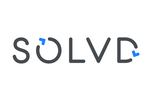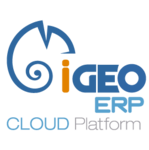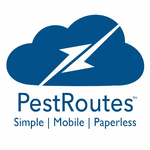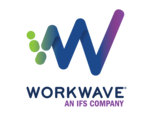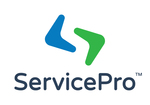What Is Pest Control Software?
Pest control software is a specialist technology that helps organizations of all sizes streamline and manage their pest control operations. This software provides a variety of features and functionalities for successfully tracking, monitoring, and eliminating pests and rodents in both commercial and residential properties. Pest control software's primary function is to arrange and manage pest treatment appointments.
This includes scheduling recurrent appointments for normal treatments, as well as responding to any ad hoc customer needs. By automating this procedure, organizations can save time and avoid missing appointments. In addition, pest control software enables precise tracking and reporting of pest observations and treatments. This assists organizations in determining the most effective techniques for removing various sorts of pests and tracking their success rates.
This information can also be utilized to develop tailored treatment plans for specific properties, providing a more personalized and efficient pest control solution. Furthermore, pest control software includes functions like invoicing and payment processing that help clients streamline their billing process. This feature allows businesses to simply prepare and send invoices, accept online payments, and track money received.
Security is a vital responsibility for any organization, and pest control software includes a variety of security features to secure sensitive data such as client information and treatment plans. This includes data encryption, user access controls, and scheduled backups. Pest control software is also mobile device compatible, allowing technicians to access it from anywhere, update treatment information, and connect with clients in real time. This provides a more efficient and streamlined method, decreasing paperwork and lowering the possibility of error.
What Are The Recent Trends In Pest Control Software?
In recent years, the pest control business has witnessed a substantial increase in the use of technology to streamline operations and boost efficiency. As a result, there has been a spike in the creation of pest control software, which includes a variety of functions to assist pest control companies in properly managing their business operations.
Here are some of the latest trends in pest control software that purchasers should be aware of before investing in this technology.
1. Cloud-Based Solutions: One of the most important trends in pest control software is the move to cloud-based solutions. This means that the software is housed on remote servers, and users can access it from any internet-connected device. Cloud-based solutions provide various advantages, including real-time data syncing, greater security, and remote access, making them a popular choice for pest control companies of all sizes.
2. Mobile Accessibility: As the use of mobile devices grows, software companies have begun to provide mobile access to pest control software. Technicians can use their mobile devices to access the program and update task details, timetables, and customer information while on the job. This feature improves productivity by allowing firms to go paperless, lowering the chance of errors and delays.
3. extensive Scheduling And Routing: The most recent pest control software includes extensive scheduling and routing features, which enable firms to optimize their routes and timetables. This function saves time and money on fuel, which is especially beneficial for firms with broad service areas and several technicians. It also enables firms to respond to emergency calls swiftly and effectively.
4. Integrated Pest Management: As sustainability becomes more important in the pest control sector, software developers are implementing integrated pest management (IPM) capabilities into their systems. This includes adopting non-chemical pest management methods, such as identifying and treating the underlying cause of infestations. IPM features assist businesses limit their usage of pesticides, which can be hazardous to the environment and human health.
5. Customer Relationship Management: Effective customer relationship management is critical for every organization, including pest control. To improve the client experience, modern pest control software includes features like customer portals, automatic reminders, and convenient payment methods. This enables organizations to create long-term connections with their clients, resulting in increased retention rates and favorable feedback.
Benefits Of Using Pest Control Software
Pest management is a crucial part of keeping a clean and sanitary environment, whether in a residential, commercial, or industrial setting. With the rise of pest problems and the necessity for effective pest management, pest control software has become a popular solution. This program streamlines and automates different pest management activities, increasing efficiency and effectiveness.
Here are some of the main advantages of using pest control software.
1. Improved Inventory Management: One of the most important characteristics of pest control software is the capacity to track and manage inventory, such as pesticides, baits, traps, and other supplies. The software can keep track of the quantity, expiration date, and consumption of each item, ensuring that you always have enough supplies on hand to meet your consumers' demands. This saves time and prevents discrepancies in inventory management.
2. Efficient Scheduling And Routing: Pest control software enables you to book appointments and manage your technicians' routes in a structured and coordinated manner. Real-time tracking and updates allow you to manage your team's schedule and guarantee that they cover all authorized regions, resulting in improved service quality and client satisfaction.
3. Streamlined Billing And Invoicing: Manual billing and invoicing processes are time-consuming and error-prone. Pest control software streamlines these processes, making it easier to create correct invoices and track payments. This not only saves time, but also promotes a transparent and professional relationship with clients.
4. Centralized Data Management: Paper-based methods make it simple to miss or lose essential client and job information. Pest control software consolidates all data into a centralized database, making it conveniently accessible and safe. This allows you to keep track of your clients, their service history, and any special needs or preferences, allowing you to deliver tailored care and foster long-term connections.
5. Improved Reporting And Analysis: The data generated and stored by pest control software can be utilized to provide thorough reports and analyses. This enables you to discover patterns, measure performance, and make data-driven decisions that improve your operations. Better insights allow you to identify and resolve any areas of concern, ensuring ongoing growth and improvement.
Important Factors To Consider While Purchasing Pest Control Software?
When it comes to pest management and eradication, having dependable and efficient pest control software can be really beneficial. However, with so many options available, it might be difficult to choose the best one for your organization.
To make the best decision, here are some crucial considerations to consider when selecting pest control software:
1. Software Type: Pest control software is available in a variety of formats, including web-based, on-premise, and mobile applications. Each type has distinct characteristics and benefits, therefore it is critical to evaluate which type best suits your company's goals and operations.
2. Features And Capabilities: The software should provide vital functions such as scheduling, customer administration, billing, and reporting. Consider extra services such as GPS tracking, inventory management, and invoicing. Make sure the program has all of the features you need to streamline your pest management activities.
3. Integration: If you currently have business software, ensure that the pest control software integrates properly with it. This will eliminate duplicate data entry and increase overall efficiency.
4. Scalability: As your company grows, you may need to hire more technicians or broaden your offerings. As a result, choose pest control software that is expandable and can meet your future needs without requiring you to convert to a new system.
5. User-Friendly Interface: The software should be simple to use and navigate, with a neat and tidy interface. It should also include a mobile version or app for technicians working in the field. 6. Customer Support: Choose a software vendor that provides dependable customer service, whether via phone, email, or live chat. You want to be able to contact them if you have any technical issues or inquiries.
7. Cost: Cost is always an important consideration when choosing a purchase. Compare the pricing of different software to see which one provides the best value for your money. Consider the additional expenditures, such as setup, training, and support.
8. Online Reviews And suggestions: Conduct your homework by reading online reviews and suggestions from other pest control companies. This will give you an idea of how reliable and effective the software is in the actual world.
By taking these aspects into account, you can limit down your choices and select the finest pest control software for your business. Remember, the appropriate software may help you streamline your operations, enhance efficiency, and ultimately improve customer happiness.
What Are The Key Features To Look For In Pest Control Software?
When it comes to obtaining dependable and effective pest control software, a few important qualities should be at the top of your priority list. Consider these aspects to guarantee that you are investing in software that suits your specific requirements and helps to streamline your pest control operations. The following are the important things to look for in pest control software.
1. Customizable Solutions: Each pest control firm has its own distinct operations and techniques. As a result, it is critical to select software that is easily customizable to meet your individual requirements. Look for software that includes a variety of modules and features that can be customized to fit your company's workflows and processes. This will allow you to optimize your operations and increase efficiency.
2. Scheduling And Dispatching Tools: Managing appointments and scheduling personnel can be time-consuming, especially for pest control companies. Look for software that includes scheduling and dispatching capabilities to assist you efficiently manage your team's workload. These technologies should let you plan appointments, assign work to technicians, and monitor their progress in real time.
3. Mobile Access: In today's digital age, having access to your software on the go is critical to the success of your organization. Look for software that has a user-friendly mobile app or a web-based platform that is accessible from any device. This will enable you to manage company operations, access customer information, and complete tasks from anywhere and at any time.
4. Integrated Billing And Invoicing: Keeping track of invoices and payments may be laborious and time-consuming. Look for software that includes integrated billing and invoicing capabilities, allowing you to generate invoices, track payments, and manage your money smoothly. This will save you time while also allowing you to keep precise financial records.
5. Client Relationship Management (CRM): Establishing and maintaining excellent client relationships is critical to the success of any pest control firm. Look for software that includes a CRM feature that lets you save client information, track their contacts with your firm, and send automated reminders for follow-ups and service renewals. This will allow you to give more tailored and high-quality services to your clients, fostering trust and loyalty.
6. Detailed Reporting And Analytics: To properly track the progress of your pest control operations, you must have access to detailed reporting and analytics. Look for software that includes comprehensive reporting features that provide information about numerous elements of your business, such as appointment scheduling, technician productivity, revenue, and so on.
This allows you to make data-driven decisions and continuously enhance your operations. By examining these essential elements, you may choose pest control software that suits your individual requirements and allows you to handle all aspects of your business more efficiently. Make sure to conduct extensive research and analyze several possibilities to choose the greatest fit for your organization. With the correct pest control software, you can streamline your operations, increase client happiness, and eventually expand your business.
Why Do Businesses Need Pest Control Software?
Pest management is a critical and continuous responsibility for enterprises in many industries, including hospitality, food service, healthcare, and agriculture. As a business owner or manager, you must ensure a safe and sanitary workplace for your staff, customers, and products. Investing in pest control software can help to streamline the process and ensure efficient and successful pest management.
Pest control software is a specialist application that helps organizations manage and maintain their pest management programs. This program provides a full solution for organizations of all sizes, including scheduling routine inspections and treatments and tracking pest activity and trends. One of the primary reasons organizations want pest control software is to ensure compliance with health and safety laws.
Strict restrictions exist in areas such as food service and healthcare to avoid disease transmission and assure the safety of products and services. Pest control software enables organizations to stay on top of mandatory inspections and treatments by providing documentation and reports to demonstrate compliance. Another key advantage of pest control software is the capacity to save time and resources.
Businesses can eliminate the need for manual tracking and record-keeping by implementing automated job scheduling and reminder systems. This not only saves employees significant time, but also lowers the possibility of human error, resulting in accurate and up-to-date data. Pest control software provides organizations with real-time visibility into their pest management activities.
Businesses can utilize digital mapping and reporting features to track pest activity and trends, identifying possible issue areas and taking proactive steps to prevent infestations. This kind of intelligence enables firms to anticipate possible pest issues and make data-driven decisions. Furthermore, pest control software can help organizations save money over time.
Businesses that manage and track pest control activities more efficiently might avoid costly infestations and property and product damage. It also enables consumers to compare and analyze the effectiveness of various pest control methods and service providers, ensuring that they are getting the most value for their money.
How Much Time Is Required To Implement Pest Control Software?
The time necessary to establish pest control software varies according to the software and the size and complexity of your pest control company. While some software can be set up and used in a matter of hours, others may take several weeks to fully integrate. The extent of modification necessary should be factored into the implementation time estimate.
If you choose more configurable and complicated software, it may take longer to set up and adapt for your specific business needs. On the other side, if you choose a simpler product with fewer customization choices, the deployment process may be quicker. Another factor to consider is the number of people who will use the software and the volume of data that must be transferred.
If you have a large staff and a lot of data, it may take longer to onboard everyone and migrate all of their information to the new system. Additionally, the skill and experience of your staff with technology influences the implementation time. If your crew is tech-savvy and has experience with similar software, they may be able to adjust to the new pest control software more quickly.
However, if your team is not as technologically savvy, they may require additional training and support, delaying the adoption process. To guarantee a smooth and timely installation, work together with the software provider and convey all of your requirements and expectations clearly. They can give you a clear timeframe and walk you through the implementation process to avoid any potential delays.
What Is The Level Of Customization Available In Pest Control Software?
Every organization has different pest control requirements and practices. As a result, selecting pest control software that allows for extensive customization to fit your individual needs is critical. The good news is that most modern pest control software packages include a variety of adjustable capabilities that allow you to personalize the software to your specific business needs.
One of the most important areas of customization in pest control software is the ability to design individual plans and treatments for various pest kinds. This allows you to tailor your approach to the individual pest problem and consumer you're dealing with. You can also tailor your inspection and reporting processes to meet your company's requirements and protocols.
In addition, customization options are provided for invoicing and billing, scheduling, and route optimization features. This allows you to configure your software based on your business processes and enhance efficiency. Some software even allows you to develop custom reports and dashboards to monitor key performance indicators and make data-driven decisions.
In addition to these features, many pest control software providers allow you to link with other systems or apps, such as accounting or CRM software, to further customize and streamline your business operations. When searching for pest control software, look for vendors who provide a high level of customization and flexibility to fit your specific business requirements.
Consider your company's specific processes and requirements, and select software that allows you to customize the features and functionalities to meet them. Selecting a highly configurable pest control software allows you to successfully manage and remove pest problems while streamlining your business operations.
Which Industries Can Benefit The Most From Pest Control Software?
Pest control software has evolved into an essential tool for organizations and industries involved in pest management. Whether you own a pest control company, a property management agency, or a food processing facility, investing in the right pest control software can significantly improve your operations. We've put together a detailed guide to help you understand which sectors will gain the most from pest control software.
1. Pest Control Services: There is no doubt that pest control software benefits the pest control sector the most. Pest control software, which includes functions like scheduling, invoicing, inventory management, and reporting, helps pest treatment companies streamline their day-to-day operations. It enables them to keep organized, track service records, and effectively manage their customer base.
2. Property Management: Property management companies are frequently tasked with managing major assets such as apartment complexes, condominiums, and commercial buildings. Without adequate pest management, these homes can soon become infested, resulting in expensive treatments and dissatisfied renters. insect control software allows property managers to plan routine inspections, track insect events, and work with pest control firms to guarantee timely and successful treatments.
3. Hospitality Industry: To ensure guest happiness and compliance with health and safety requirements, hotels, resorts, and restaurants place a high value on keeping their facilities clean and pest-free. Pest control software is useful for monitoring and recording pest incidences, scheduling treatments, and keeping a thorough record of pest control actions for audits and inspections. It also allows for prompt and efficient communication with pest control suppliers, resulting in rapid and effective outcomes.
4. Healthcare Facilities: The healthcare business is heavily regulated, with stringent adherence to sanitation and pest control protocols. insect control software enables healthcare organizations to quickly manage and document insect events, generate audit reports, and schedule recurring treatments to protect the safety and well-being of employees, patients, and visitors.
5. Food Processing And Manufacturing: Pest infestations pose major dangers and financial costs to food processing and manufacturing operations. Thus, good pest management is critical in this industry. insect management software is useful for monitoring insect activity, scheduling treatments, and adhering to food safety rules. It also helps to ensure regulatory compliance by producing precise reports and keeping a transparent record of pest management efforts.
Conclusion
Finally, selecting the appropriate pest control software is critical for any organization in the field. By taking into account the important criteria we've addressed, such as features, pricing, customer support, and integration capabilities, you can make an informed decision that will benefit your company long-term. Remember to conduct thorough research and comparisons of various software solutions, read reviews and testimonials, and take advantage of free trials to ensure that the program matches your specific business requirements.
Additionally, before making a purchase, do not hesitate to contact the merchant if you have any questions or concerns. Investing in dependable and effective pest control software can help you streamline your operations, improve client happiness, and eventually increase your profits. We hope this buyer's guide has helped you choose the best pest control software for your business.




